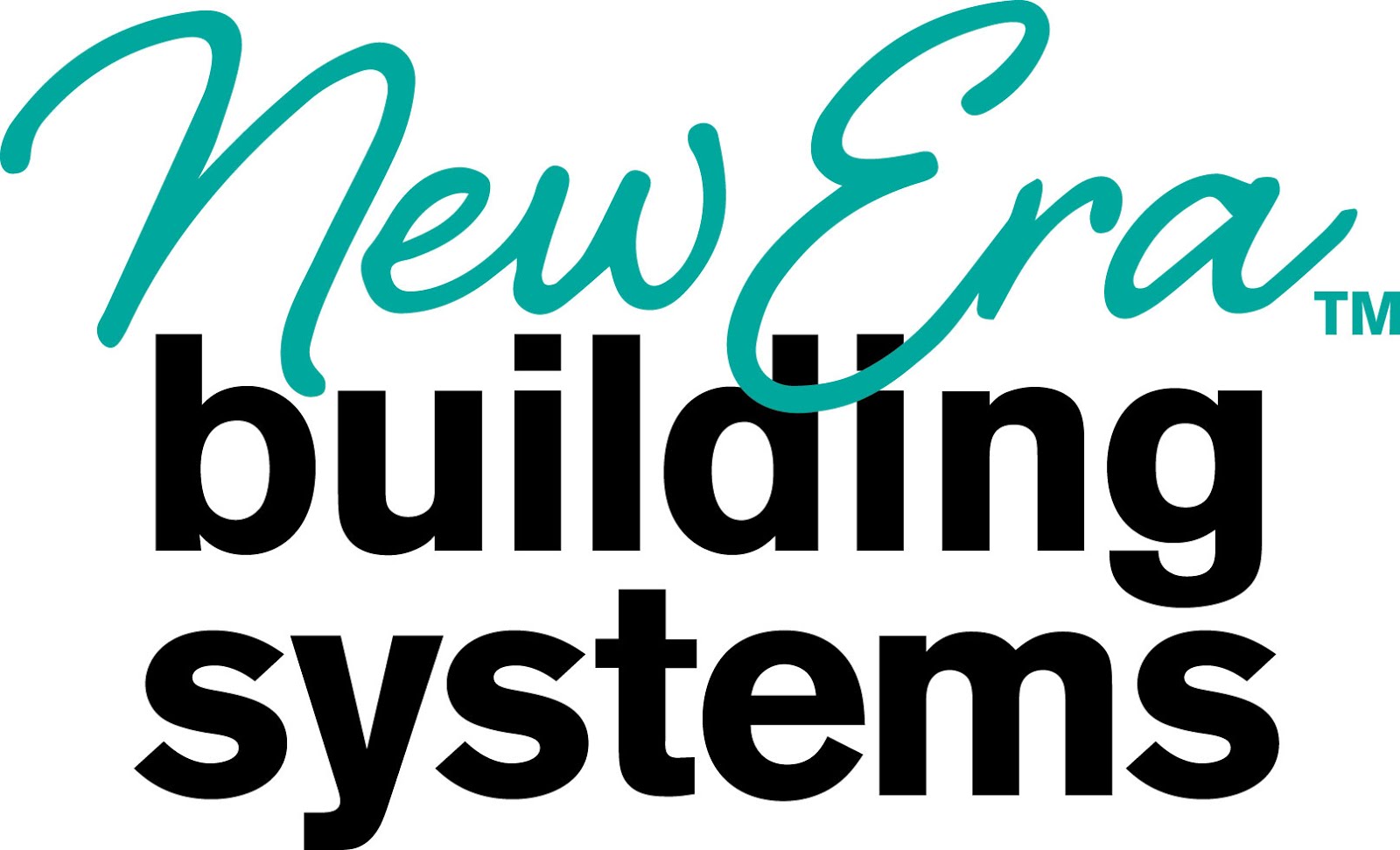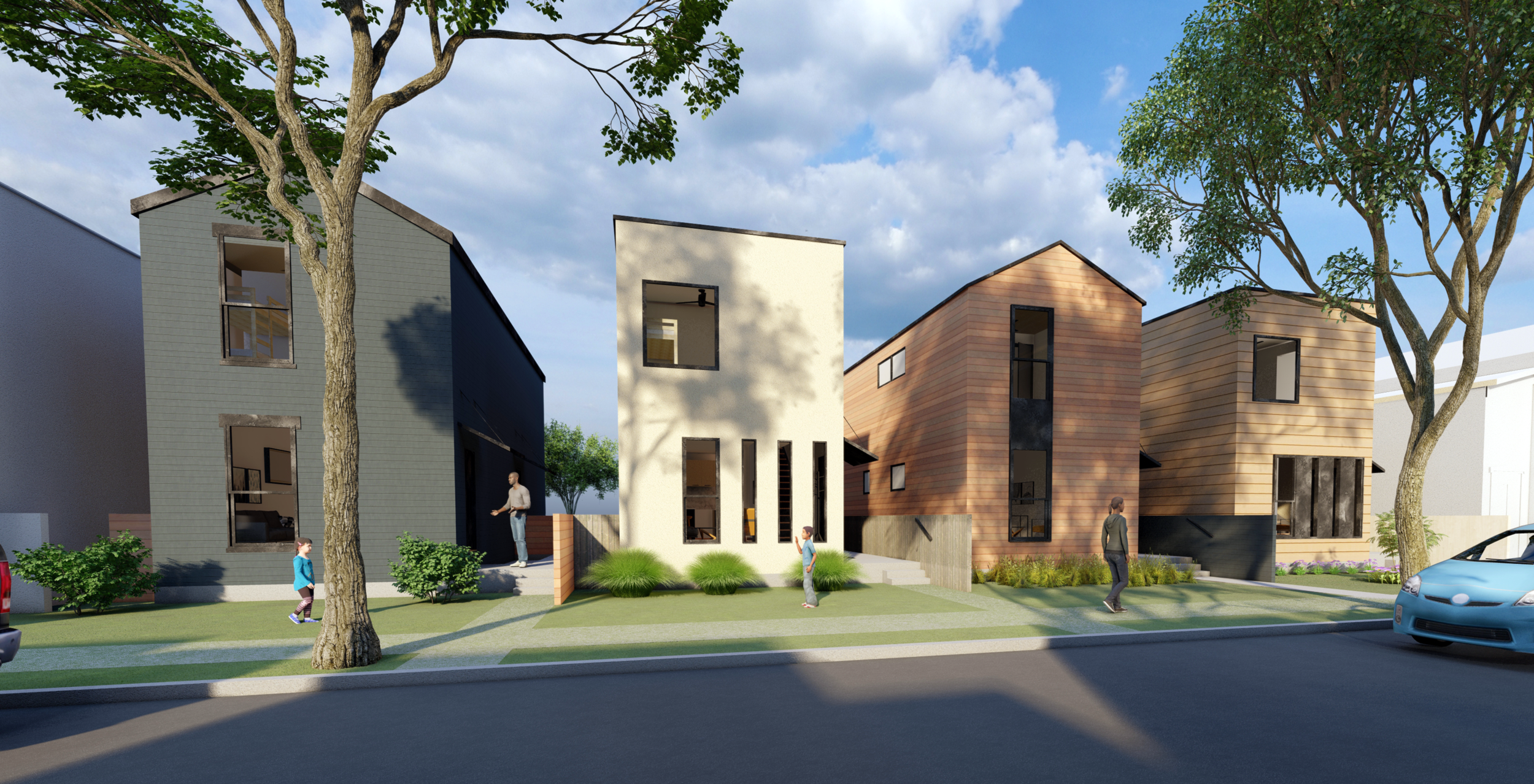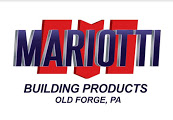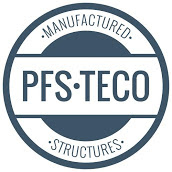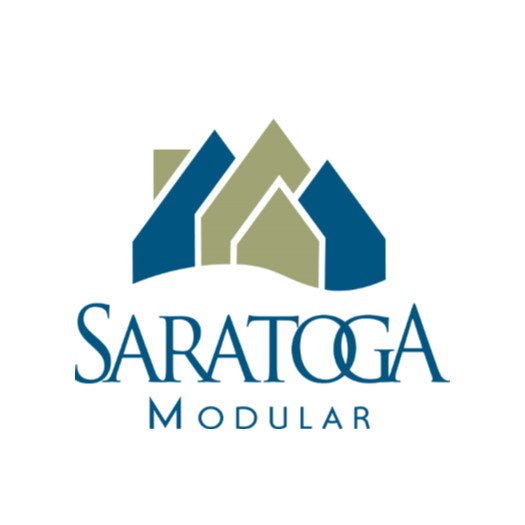There’s a quiet revolution taking shape in our cities, and it doesn’t look anything like the massive high-rise construction cranes we’re used to seeing. Instead, it arrives in sections on flatbed trucks, is assembled in a matter of weeks, and offers a glimmer of hope to families and communities starved for affordable, high-quality housing.
Cook County, Illinois, recently announced a $12 million pilot program to build modular homes on vacant lots in Humboldt Park, Chicago Heights, and Proviso Township. The goal? Deliver high-quality, energy-efficient homes more quickly and affordably than traditional stick-built methods allow. Evanston has joined this movement too, rolling out its own modular homes initiative targeting working families earning up to 120% of the area median income.
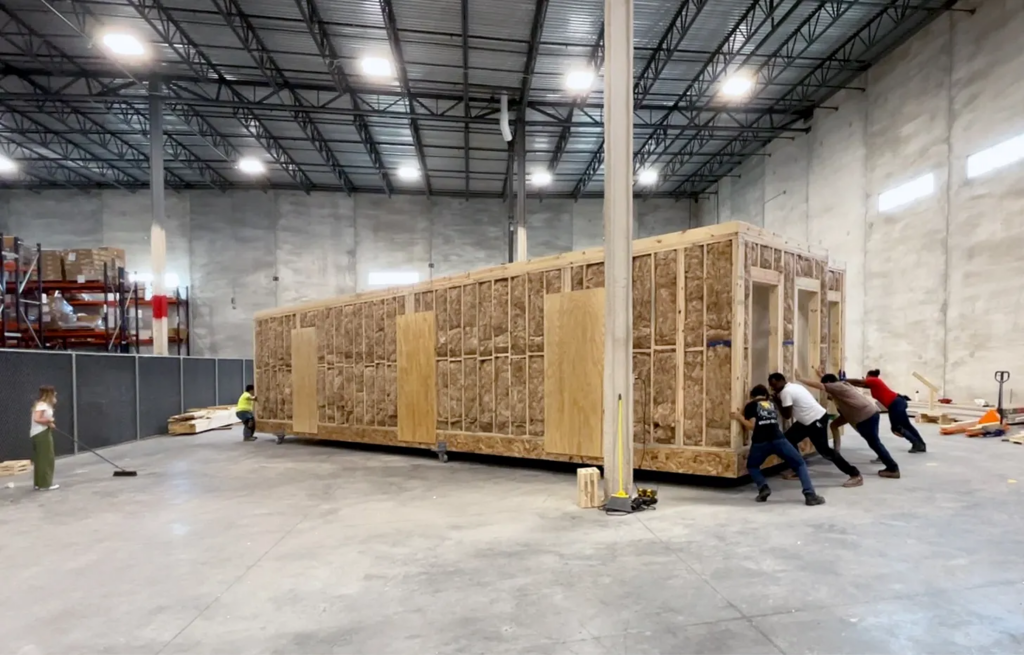
All photos – Inherent L3C modular
These homes aren’t what many still imagine when they hear the word “modular.” Far from the outdated images of flimsy trailers, today’s modular homes are code-compliant, robust, and designed to blend seamlessly into existing neighborhoods. In Cook County, the first twelve homes are already completed, each offering three bedrooms and two baths across two stories, giving new homeowners the space and dignity they deserve.
Behind this effort is Inherent L3C, a mission-driven development and design company led by Tim Swanson. Inherent L3C is playing a crucial role in shaping these modular solutions, bringing a community-focused approach that prioritizes quality and long-term livability. With Swanson’s leadership and commitment to innovative housing, these projects are setting a new standard for what urban housing can be.
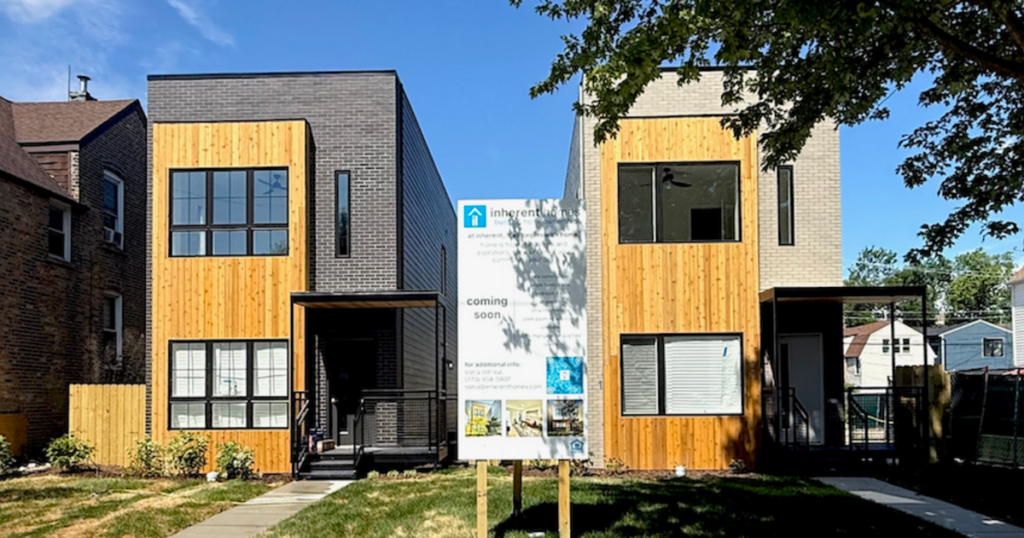
The appeal of modular construction is straightforward: speed, cost, and sustainability. Because modules are built off-site in controlled environments, there are no weather delays slowing down framing crews. Once delivered, these homes can be finished and occupied in a fraction of the time it takes to build a traditional house. Cities see the value in this approach, especially when tackling urgent housing shortages that have only grown more severe in recent years.
Financially, modular makes sense too. By controlling much of the process off-site, developers can reduce costs, generate less waste, and create energy-efficient homes that save residents money long after move-in day. In Cook County, down-payment assistance programs are being rolled out alongside these modular efforts, making homeownership even more attainable for families who’ve long been priced out of the market.
The environmental impact is another important piece of the story. Modular homes generate significantly less construction waste and are often built to higher energy-efficiency standards than their traditional counterparts. In other cities like Toronto, modular projects have achieved advanced green building certifications and are already housing seniors and vulnerable residents in supportive, community-focused settings.
What we’re witnessing is more than just a few isolated pilot programs. It’s the beginning of a broader shift in how cities think about housing. These projects aren’t simply about putting up a few quick homes; they’re about creating replicable models that can be expanded and adapted across neighborhoods and municipalities. They illustrate a new kind of municipal thinking—one that values speed without sacrificing quality, embraces innovation to address housing equity and climate challenges, and brings together public and private partnerships in powerful ways.
As cities like Evanston and Chicago embrace this approach, it’s clear that modular housing isn’t just a temporary fix—it’s a strategy that has the potential to reshape urban landscapes for decades to come. By providing homes that are dignified, durable, and efficient, modular construction offers a path forward that feels both practical and deeply human.
From the South Side of Chicago to the streets of Evanston, modular housing is emerging as a quiet hero in the battle for affordable housing. It’s fast, it’s green, and it’s proving that innovation doesn’t always have to mean something flashy or futuristic. Sometimes, it simply means building better homes for the people who need them most—and doing it now, not years down the line.
In a world where waiting lists grow longer and housing dreams feel further out of reach, modular construction might just be the blueprint cities have been waiting for. And as more communities watch these early efforts take root, don’t be surprised if you start seeing those flatbed trucks roll into a neighborhood near you—carrying with them not just walls and roofs, but hope.
Source: Evanston Now — “County launches modular homes program” Click here to read the original article
.
With over 8,000 published articles on modular and offsite construction, Gary Fleisher remains one of the most trusted voices in the industry.
.
CLICK HERE to read the latest edition
Contact Gary Fleisher



